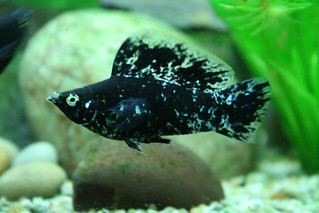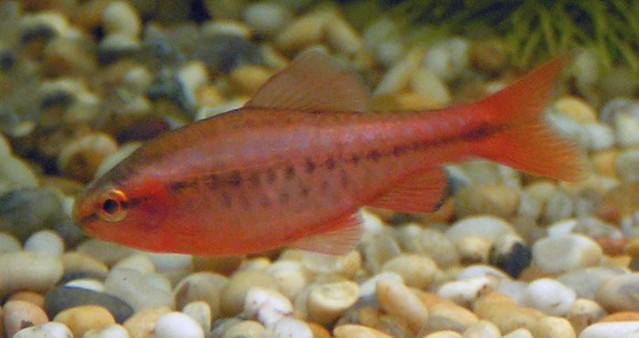 |
| Discus Fish - Photo by Jim Linwood |
Even if the fish heals after the treatment, the wound can leave a permanent scar. Treating the wound while it is still small is strongly recommended. You can treat the disease by increasing the water temperature from 30 degree Celsius to 36 degree Celsius for a couple of days, 8 to 10 days is ideal. Remember that an increased water temperature should be combined with increased aeration to keep the oxygen level up. You can combine heat treatment with Metronidazole, this should be administered orally. You can give this to your Discus fish once every three days. If your fish is not responding well to heat treatment, you can just use the Metronidazole treatment.
Another Discus fish disease is gill fluke. This is very common among Discus fish and it is very dangerous for Discus fry. Gill Flukes are external parasites that destroy the gills and cause heavy breathing and irregular swimming. The affected fish can become totally paralyzed and can sink down to the bottom of the tank.
You can cure this by using formalin. Infested parents can still spawn but when the offspring grow to about the size of a 10 cent coin, gill flukes transmitted by the parents can become a serious problem. Another form of Discus fish disease is being affected by internal parasites. The fish can have internal parasites without posing some serious threats but sometimes these parasites can grow uncontrollably and that's when the problem begins.
Common symptoms include emaciation and white feces. While it can be difficult which specific parasite affects your Discus fish, a dose of Metronidazole usually clears the problem out. If your Discus can still eat, you can prepare a solution of 200 ml water and 10 ml liquid Metronidazole and soak its food in it for an hour. Feed your Discus fish with the medicated food every 2 days for a period of 10 days. If your fish is no longer eating, you would have to force feed it using a syringe without a needle.
usually clears the problem out. If your Discus can still eat, you can prepare a solution of 200 ml water and 10 ml liquid Metronidazole and soak its food in it for an hour. Feed your Discus fish with the medicated food every 2 days for a period of 10 days. If your fish is no longer eating, you would have to force feed it using a syringe without a needle.
|








